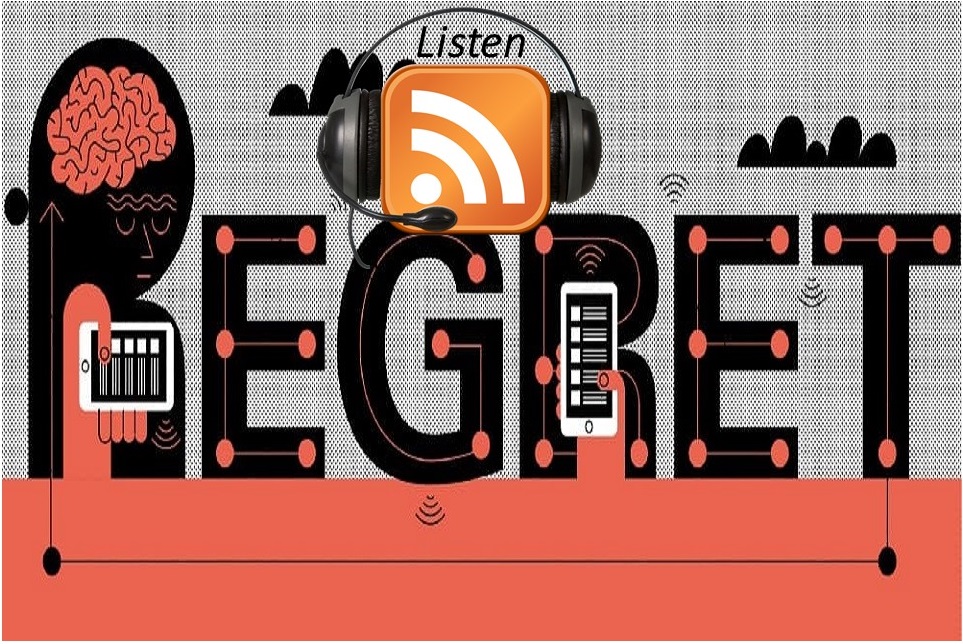Ethical Regret Testing
The hooked model synthesizes decades of research into a simple framework, firms can use to shape perceptions and build habits. Put bluntly, it’s a form of manipulation, but then all design is a form of manipulation. Whether it’s interaction design, whether it’s interior design, all design changes, our behavior to suit the designers needs. Now we have a special responsibility, When we as a designers are crafting user behavior to meet some kind of commercial interests from the high ceilings of a library to the evocative colors in the poster to the dropped angle in the lounge, chair design manipulates your feelings to the designers like it as with all powerful tools, designing hooks can be used in a range of ways. In short, manipulation has a good side and a bad side. For example manipulation that comes in the form of persuasion is great. Persuasion is defined as an action that the user themselves want to do, and the product facilitates that behavior. So we can persuade folks to form a habit around exercise. Learning a new language or managing their finances, the opposite of persuasion is coercion. Coercion is when a product or service gets someone to do something they didn’t want to do. Take investment platform, Robinhood, the firm gamified investing to encourage rapid stock trading, something most financial pros will tell you, is not a good idea for building long term wealth. More than at any other retail brokerage firm, Robinhood users trade the riskiest products and at the fastest pace. Products become more unethical the more they cross into coercion as a product takes no action to protect vulnerable populations, skips a use and abuse policy, and fails of regret test, it becomes more coercive. And as a result, unethical first consider the most vulnerable populations to coercion. Children are a protected class. I’m not going to let my 10 year old daughter walk into a bar and order Gin and Tonic. She’s not ready for that. I’m not gonna let her go to a casino and start gambling. She’s not ready for that either. Take Jewel launched in 2015. The firm quickly grew into a leader in E cigarettes with almost 50% market share in 2020. However, in 2019, 28% of high school students and over 10% of middle school students used the E cigarettes and 81% of jewels Twitter followers, or between 13 and 20. We can assume that a portion of jewels users. For children, there’s another protected class of people who are not currently legally protected, who I think do deserve protection. People who are pathologically addicted, people who, despite their best efforts, can’t stop using a product or service take online betting. the United Kingdoms was the prominent online sports betting app ,Contain has acknowledged that a portion of its customers may be addicted. Are problem gamblers gambling addiction is a widespread problem in USA alone, nearly 3% of Americans, roughly 10 million people, struggle with a gambling addiction. As such, when a company reaches a certain scale, some users may inevitably be from vulnerable populations if the product is serves. Vulnerable populations ask what can be done to protect these users? Can’t every product that addicts people do something about it not necessarily, however, online products, gaming services, social media companies, gambling sites?
They know how much their users use the product. This is gonna specific and quantifiable use and abuse policy. Particularly support vulnerable populations. Set a standard for an engagement reflects unhealthy use to clarify decision making and support users who may later regret behavior. If you are building the kind of product that could unfortunately addict people, it behooves you to have a use of use policy. If our product is used. More than whatever bar X number of hours a week, 30 hours a week, 40 hours a week, whatever that number is, we are going to reach out to that user and offer help. Indent Ames, case. The business has access to customer data, including betting behavior, both a user’s betting frequency and can grant or deny access to these customers armed with data on unhealthy engagement, the business can take action. We have that effort of trying to offer them assistance, maybe resources to help them find ways to conquer that addiction, maybe even helping them set barriers and speed bumps to how they use the product, asking us to disconnect their account or help them use it less.
In 2021, and Entain piloted machine learning to identify and stop addictive behavior in real time before a player is in trouble Entain has rolled out new features for customers to put daily and weekly caps on time and money spent on the platform. Between 2019 and 2020 and Teen Self reported in 84% increase of customers. Setting time and spend limits. In addition, the company contributes .5% of their gross gaming yield to support academic research, education and gambling addiction, and treatment in Jewel Case No action was taken to protect youth smokers in its first year of post launch. Jewel purchased advertising on cartoonnetwork.com, Seventeen.com and Nickelodeon all channels known to be frequented by children and teens. Since then, Jewel has ended advertising oriented to youth and committed significant resources towards combating underage E cigarette use.
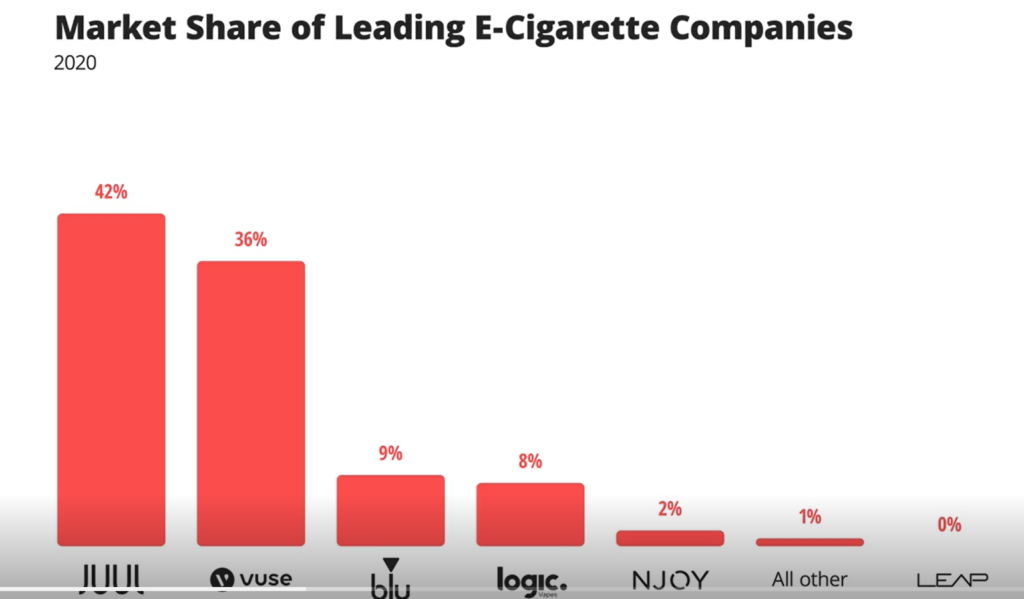
But youth use of vaping products remains high after considering vulnerable populations. And they use and abuse policy to protect users, apply the regret, test the regret test says that it’s only ethical to design interactions that the user themselves would want to do, that it would be an experience that they would do without regret. Well, how do we test that we use the same exact technique we use for all interaction design? We test it now. Usability testing has been done for decades. Almost everyone who builds products has an experience bringing people into a room, showing them the design experience, showing them the interaction and getting their reaction. Product designers can ask a simple question to a representative customer. Simple as an ethical check, would you use the product without regret knowing everything the product designer knows.
If the results show an unacceptable number of customers, regret using the product. The feature fails the regret test. It manipulated customers into something they did not want to do. Don’t implement the feature when designing or redesigning our product.
I think of these three questions. As an ethical checklist, does the product take action to protect vulnerable populations? Is there a use and abuse policy in place? Does the product pass the regret test? The more nose to these questions, the more unethical a product the hooked model is a powerful tool to ensure you’re using this powerful good. There are a few key takeaways. First, coercive practices most often end with a tarnished brand. Coercion may be an effective way to quickly gain customers in the short term, but it is not an effective long term strategy. We never want someone to use our product and regret doing business with us. Not only is that unethical, it’s also bad for business because in this day and age, If you get someone to do something they didn’t want to do, not only will they not do business with you again, they’re gonna go on social media and tell other friends not to do business with you, either with proactive support to protect vulnerable populations and Entain was recognized as the 2020 safer Gambling operator of the year by the Oscars of the E gaming sector. Jewel, on the other hand, has lost 87% of its value between 2018 and late 2021. After mounting public and regulatory pressure. Second manipulation exists on a spectrum from good to problematic, a product with good intentions can still have bad outcomes to keep your products persuasive and avoid coercion. Protect the vulnerable populations having use and abuse policy and apply the regret test for more unethical development of habit forming products.

When the markets collapsed in 2008, it felt like it just couldn’t win and then for much of the 2010, it felt like you just couldn’t lose. Between 2010 and 2020, the Dow and NASDAQ increased almost 300 and 400%, respectively. A casual $100 invested in Bitcoin in 2013 became a significant $50,000 by late 2021, but only 1.6% of day traders are actually profitable each year. even though it’s hard to succeed one in five Americans were playing the stock market due to the increase interest in crypto and day trading as a result of the pandemic, investing was no longer for the elite and trading app. Robinhood was positioned perfectly. To serve customers eager to make money in a bull market by the end of 2021, the fintech company grew to almost 18 million monthly active users with a market capitalization of just over $16 billion, Robinhood sought to fulfill its mission to quote democratize finance for all by lowering the barriers to entry, making it Commission free and mobile first investing has become more accessible to more diverse groups of people who normally don’t have this opportunity.
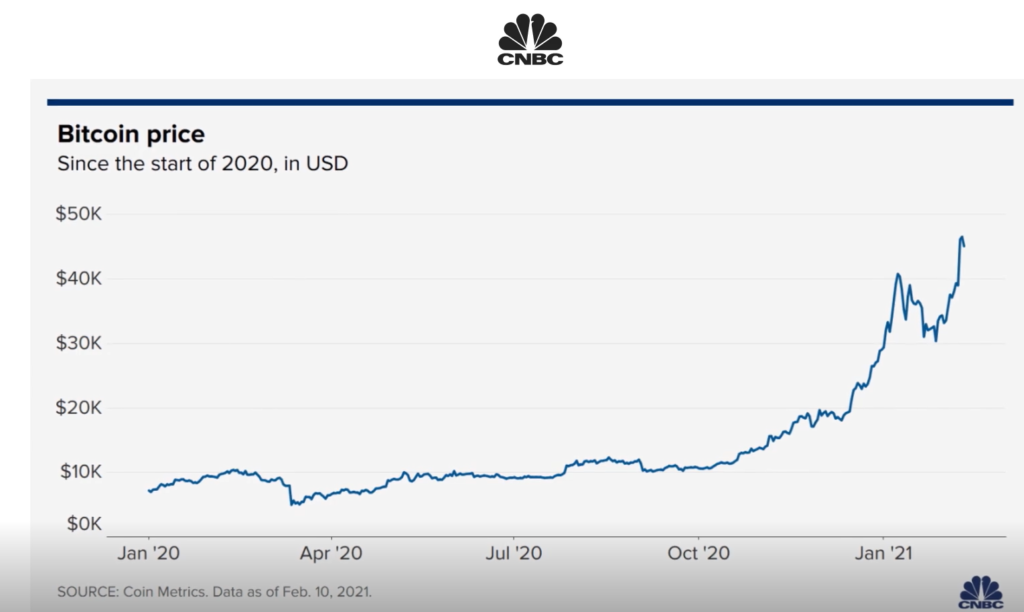
It hosts the greatest number of Latino and African American traders compared to competitors, and Gen Y and Gen Z make up 70% of the user base. But this accessibility comes with detrimental consequences. Critics, including Warren Buffett have likened it to a casino due to the apps gamification of actions that puts users financial health at stake. That platform is fielded numerous government complaints, one of which stated that it quote, uses aggressive tactics to attract inexperienced investors. Central to a products engagement strategy is its ability to move through the hook cycle, starting with the trigger to the action phase to the variable rewards phase, and finally the investment which encourages the user to return through the habit loop. While Robin Hood does provide the opportunity for the average user to potentially make a profit in the markets, the app demonstrates coercive tactics by failing 2 ethical checks. Not supporting vulnerable users and lacking a use and abuse policy first support vulnerable populations.
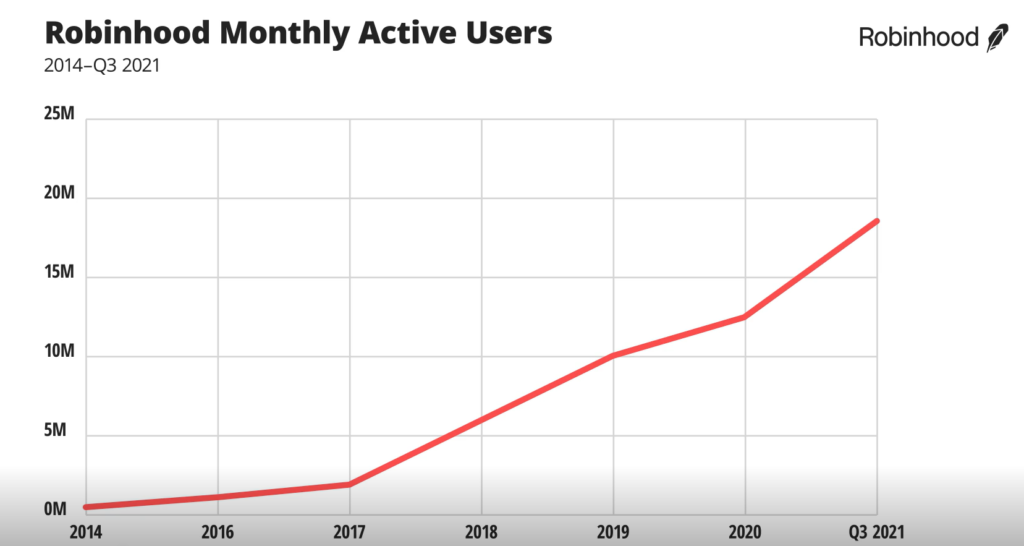
Robinhood fails the first ethical check by incentivizing novice users to take high risk actions without adequate understanding of the detrimental consequences luring customers in with free trades. 50% of Robin Hood users are first time investors with limited experience in volatile financial markets in a matter of minutes. Users are approved for options trading without any prior knowledge, but the consequences of the simplicity are significant. In 2020, a 20 year old man killed himself after multiple failed attempts. To contact the company after Mistakingly believing he had lost $700,000, the lack of customer support leaves users vulnerable when seeking information. Robin Hood uses nudges to encourage frequent app interaction. The platform pings users on stock price alerts and portfolio increases, which tempts users into repeat transactions. Push notifications from an app resulted in an engagement rate of 88%. Buying and selling stocks on Robin Hood is so easy that customers trading velocity far outpaced competitors despite trading frequency being inversely related to long term financial gains.
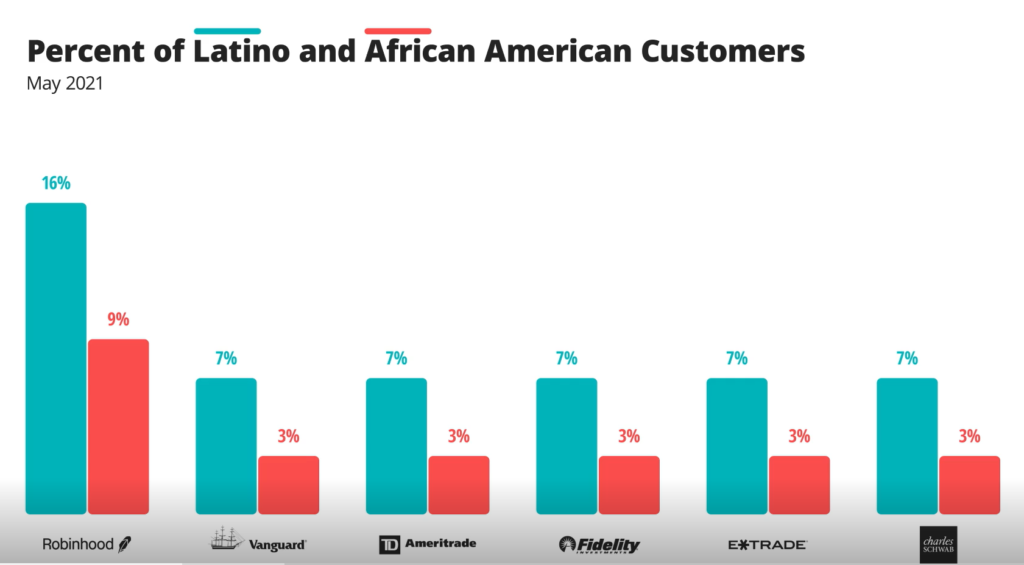
One Robinhood user completed 12,700 trades. In just six months, while another inexperienced user averaged 92 trades per day in response to claims of inadequate customer education, Robinhood took steps in early 2021 to improve customer financial education. The app launched Robinhood learn, which includes modules covering the basics of investing. While this diminishes the vulnerability of their users, the platform still encourages frequent trading and LAX screening for riskier options and margin trading. 68% of customers were approved to trade options without the necessary qualifications for Robin Hood. More frequent trading makes the app more money as 80% of the companies. Revenue comes from selling order flow. Second, establish a use and abuse policy. Robin Hood does not provide a distinct use and abuse policy which would provide users with guidelines regarding appropriate use of the app, thus failing the second ethical check upon signing up, users must agree to a 45 page customer agreement within those 45 pages. There’s no mention of it Use and abuse policy.

It’s hard to claim this is a stringent method of determining if users understand the product when 97% of young people agree to legal terms and service conditions without reading them in the past, the only limits to customer trading have come from Robin Hood liquidity concerns, and not those inspired by protecting customer interests. For companies looking to build habit forming products that ethically persuade. And avoid coercion. Here are a few key learnings. First, be transparent to gain trust. Customers were not aware that Robin Hood made money by allowing larger firms to trade against them, compared to $195 at Schwab. Robinhood gains a shocking $18,955 from trading firms for.
Every dollar in the average customer account at the sacrifice of their customers best interest. Robinhood coerces user trades to make more money, which resulted in a $70 million fine in June of 2021. Second, when designing a product considering Corp rating of regret test, this check asked the customers if they would. Use the product without regret if they knew everything, the product creator notes. Companies can do this through user testing, and if an unacceptable number of customers regret using the product, then it fails the regret test and the features should not be implemented.
If you can send your users through the four steps of your hook. Trigger action warrant investment faster with greater velocity than the competition. That’s one way that habits are captured. Velocity is speed with a direction. When it comes to the hook to model products that take customers through a hook quicker than arrival have a competitive advantage. Consider, for example, what Apple widgets did by allowing users to get. Deeper into an app experience by creating one of these widgets on their home screen. So for example, in the Spotify app I used to have to open the Spotify app and search for what I wanna listen to. But when Apple created these widgets, I could push one button and continue listening with its widgets
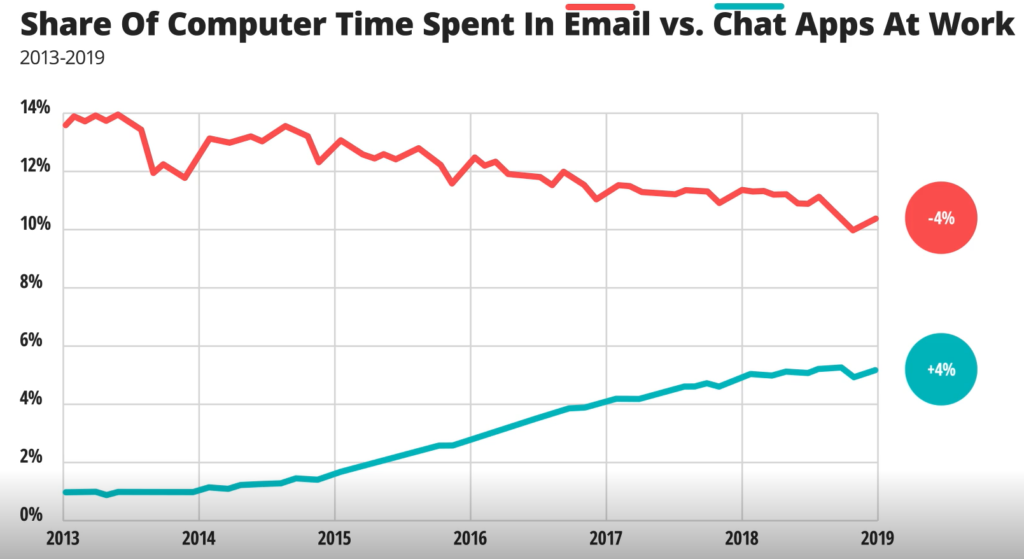
IPhone users can quickly jump into a recently played podcasts or playlists where they’re rewarded with a song that Spotify passively collects. As an investment in the form of data, the second way to capture the competitions habit or to defend an existing habit, is greater frequency of interaction through the hook. So if you can interact with your user more frequently throughout their day than the competition, that’s a way to capture the competitions habit. Take slack by emphasizing bytesize chats over word emails. The messaging colleagues became a quicker, more frequent behavior between 2013, when Slack launched and 2019, the share of computer time spent on email dropped by 4%, while messaging grew 4%. Key to slack success with its novel interface, which provided more order and control than an inbox and interfaces where two things meet to interact. It can be a physical storefront where a customer and a vendor exchange currency for goods. It can be a digital interface where someone interacts with a vendor in order to buy an airplane. Ticket or checkout for an online good or service. Whenever an interface changes the habit, debt gets reshuffled. Companies that can’t make that interface change that can’t allow us to interact with those products and services with greater frequency. Those are the ones that people tend to break their habits with.
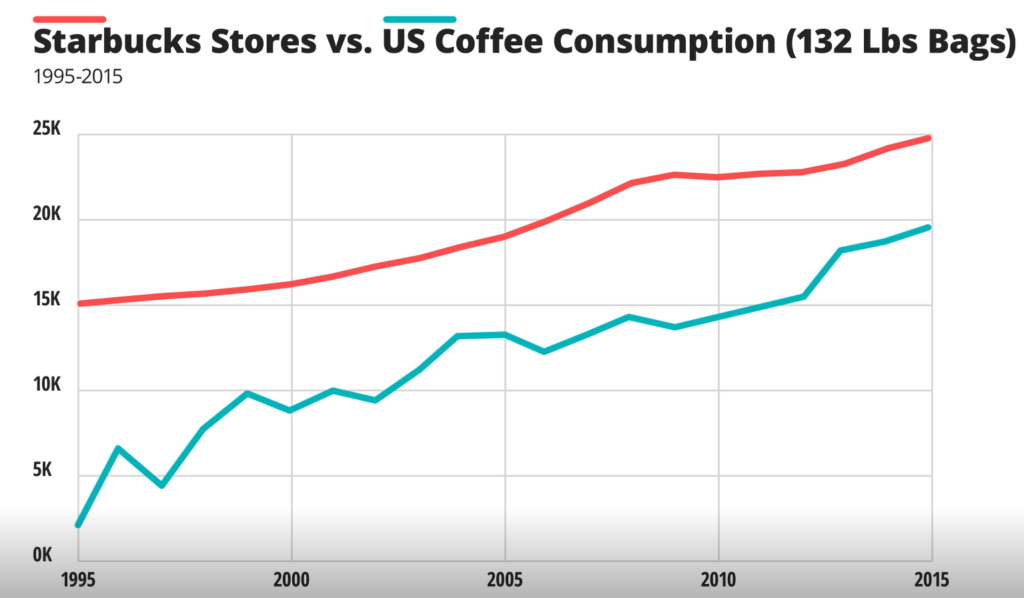
Take Starbucks with its urban chic decor and curated playlists. The Seattle firm redefined the cafe experience, becoming a cultural staple in the process. Between 1995 and 2015, while Starbucks rapidly expanded their physical footprint, US coffee consumption grew over 75%.
We think about the move from desktop to mobile and Facebook’s purchase of Instagram. And Zuckerberg designed Facebook in his dorm room. This was before the iPhone, and so it was optimized for a web interface. It still is. But Instagram was designed mobile first. And when Zuckerberg found that people were scrolling on their phones to look through peoples photos on their cell phones more frequently than on their laptops, he knew his habit was threatened. With its grip over the scrolling habit, threatened, Facebook acquired Instagram for $1 billion in 2012. The bet paid off. A study found that if Facebook separated from Instagram, Instagram would be worth over $100 billion. The third way that we can capture the competitions customer habit or defend an existing habit. Is to make the reward more rewarding. Rewards provide instant gratification that swings customers from a negative to a positive emotion to defend or capture. Habit. However, rewards must do more than just satisfy. They’ve got to delight now. This doesn’t happen often. This is pretty tough to do. A Harvard Business Review study found that in order to displace the momentum. Of a habit. A product can’t just be a little bit better, it has to be nine times better to escape that inertia of using an existing solution. Sometimes simple changes can dramatically improve and industries reward. Take bumble, the Dating app differs from competitors by only letting women initiate conversations in heterosexual matches. This small change makes the reward meeting a match more rewarding. The move reduces unwanted messages and places women in a more active rather than passive position from the get go. Bumble shift ignited explosive growth as daily active users nearly tripled between 2018 and 2021. Bumble has increasingly captured market share, while its main rival Tinder has stagnated the 4th way firms can capture or defend a habit is by making it easier for customers to enter their first hook cycle.
Classic example here is Microsoft Office versus Google Docs Microsoft Office used to be the most widely used enterprise software in the world? It no longer is today, that title is held by Google Docs, so if you’re a student and you just wanna write your term paper up, well, what’s easier to get into going to buy the software which used to come on a disc and cost a lot of money by buying Microsoft Office or just log on to Google Docs and start using it immediately.
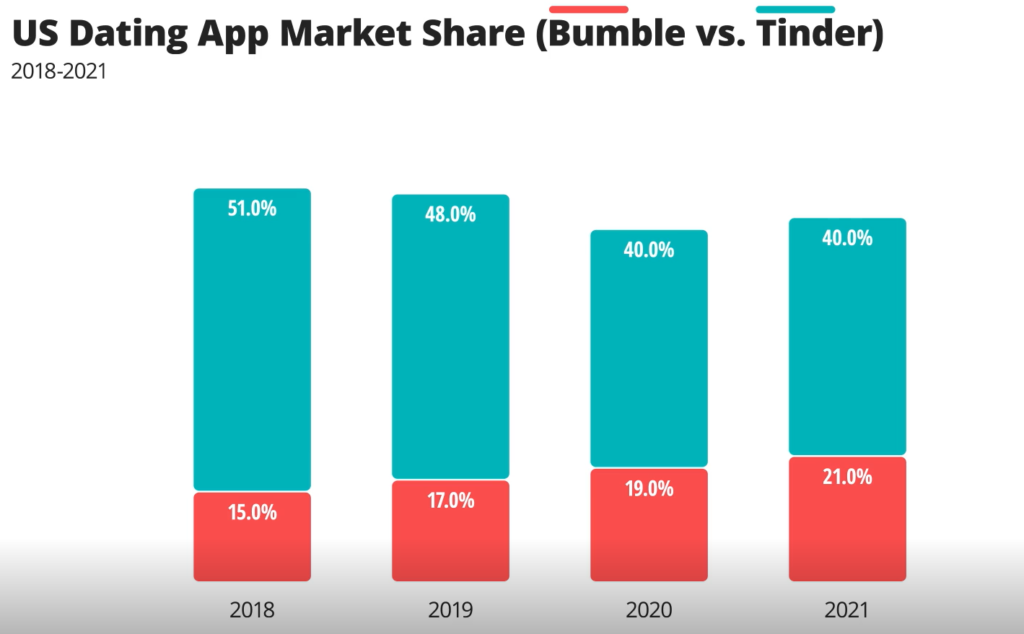
Take the example of Zoom, the Apple App Store’s most downloaded app in 2020, while the major tech companies each had their own video conferencing solution on Zoom launched the San Jose based company rose to prominence by being easy for new customers to use their first time, no login required. A simple user interface and free to use for the first 40 minutes. If your firm is looking to capture or defend the customer, there are a few key learnings. First, the more the four strategies you can apply to your product, the better the odds are in your favor. Look no further than Amazon, which is used as several strategies to capture and defend the ecommerce habit. The Seattle firm rose to prominence by recognizing retail shift to desktop and didn’t stop there from its one click ordering into voice activated purchasing, Amazon pushed shopping into a quick and unconscious behavior. Customers are rewarded for with two day delivery his second disrupt yourself before someone else does, because once you have captured a habit. Your competition won’t sleep until they’ve captured the top spot. Netflix did a genius job of displacing itself. They transition from mailing DVDs to now becoming a streaming service, which is even easier with greater velocity through the hook than their previous model. It’s a wonderful example of how you have to eat your lunch or your competition. I’ll need it for you. Third lookout for the next big interface evolution that can help you leapfrog your competition and secure a customer habit. So as we went from desktop to laptops to mobile devices to wearable devices and now auditory devices, there are new opportunities to create habit forming products in the future, we’ll see new opportunities to create habits. In augmented reality and virtual reality that can change consumer behavior because of a significant interface change. For more on capturing and defending customer habits.
Many of today’s most habit forming products have become verbs. If you have a question, you Google it when you want to get somewhere you Uber. And if you want to pay a friend, you Venmo them. And if you need to send instant messages to your coworkers. It’s likely that you slack them. As of 2021, Slack is used by more than 10 million people to send more than 1.5 billion messages per month within a year of its founding in 2014, Slack was labeled the email killer, which was fitting given the company’s rapid user growth and plummeting share. Last computer time spent on email central to products engagement strategy is its ability to move through the hook cycle, starting with a trigger to the action phase to the variable reward and finally investment, which encourages the user to return through the habit loop.
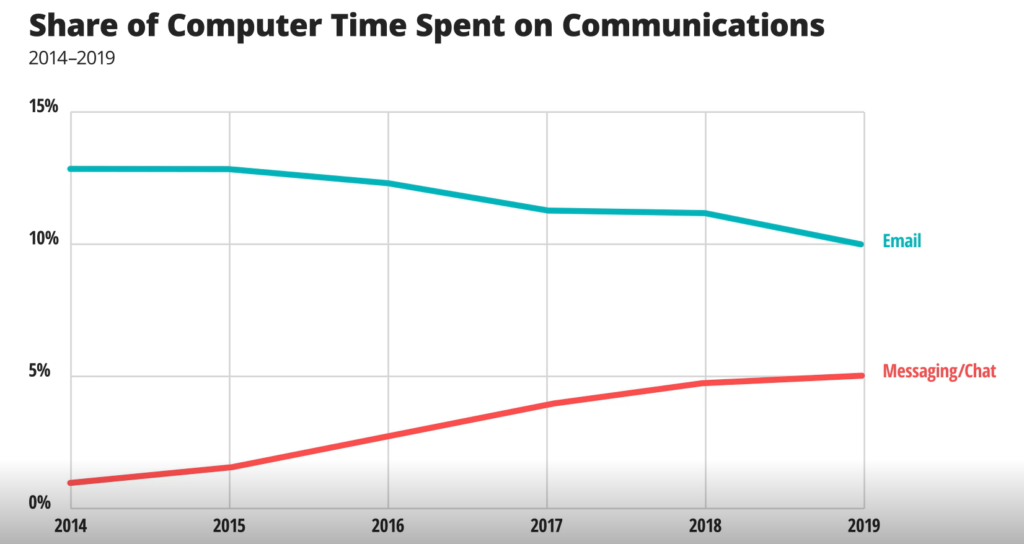
One of the keys to Slack success in capturing the workplace messaging habit away from. Email is it’s ability to leverage easy entry frequency, velocity, and rewards. These four strategies incentivize users to remain in the slack Hook cycle first, enabling easier entry, signing up for slacks freemium product requires about five clicks, making it simple for users to. Enter the first book, small businesses and enterprise teams gravitate to slack because they could sign up for the free version, which lets users create unlimited channels, access unlimited message storage, and not have to deal with procurement. Slack converts nearly a third of its premium users head and shoulders above other workplace apps like Dr Dropbox and. Government second frequency slacks, intuitive interface and expansive app integration library enables teams to use the tool as a central hub where work happens. This in turn increases the frequency of use. The average slack user spends nearly two hours per day actively engaged on the platform. In exchange, Slack users save 90 minutes per day by using slack instead of email.
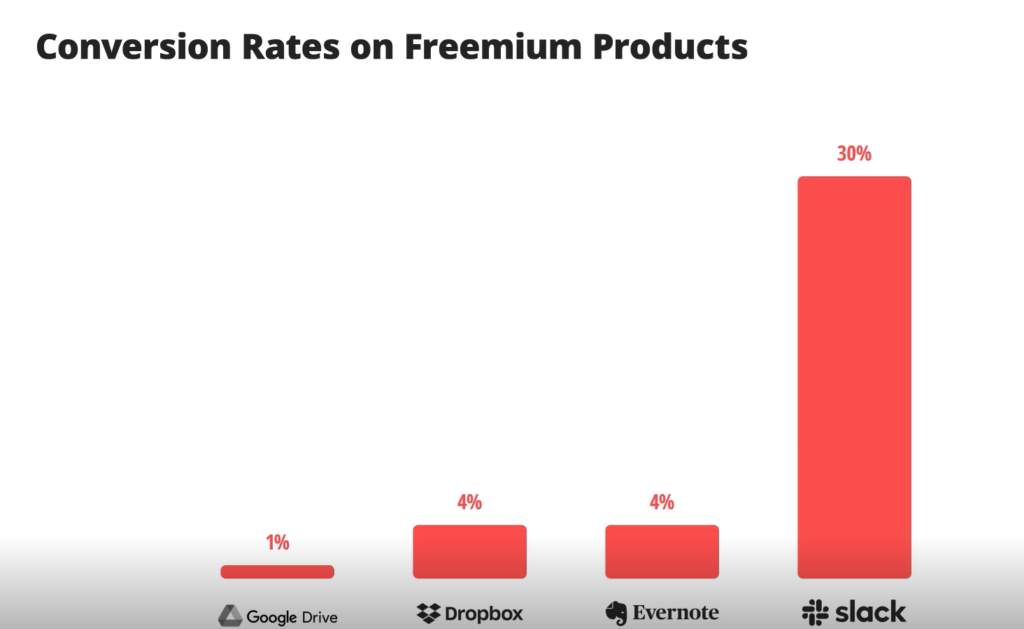
Slack also drives frequency by integrating with over 2400 apps, more than triple that of its competitor Microsoft Teams with its multitude of integrations, slack isn’t just a place to converse with teammates, it’s where employees manage projects, deploy code or requesting time off third velocity.
It’s quicker to read and respond to colleagues in slack that over email. On average it takes 3 minutes to read an email, whereas checking a slack message takes less than two minutes. In 2020, the median response time to an email was more than. Four times longer than slacks. Median response time slacks high velocity is by design. It’s invite only workspace seals off companies from outside distractions so workers can remain focused on internal communication. Finally, rewards what was slacks major improvement over emails reward. Connection unlike email, communicating on Slack, feels like a natural conversation. 91% of workers want a closer relationship with their coworkers. Nearly all Slack users say the platform helps them forge better relationships than email. Slack further supports community building by making it easy to add channels on topics. Unrelated to work, whether it’s discussing a coworker’s favorite chebahtah recipe or using a custom emoji to react to their Comic Con costume, slack makes it simple to build more meaningful relationships with coworkers. For companies looking to capture or defend a habit from their competition, slack offers a few key learnings first. Even small interface changes can create tremendous value. Slack wasn’t the first messaging software to operate on mobile phones. Gmail had been available on phone since 2006, but Slack took a familiar interface. The inbox and reconfigured it to more closely mimic natural conversation. While some aspects of the platform remain unique. Such as channel based conversation and message grouping.
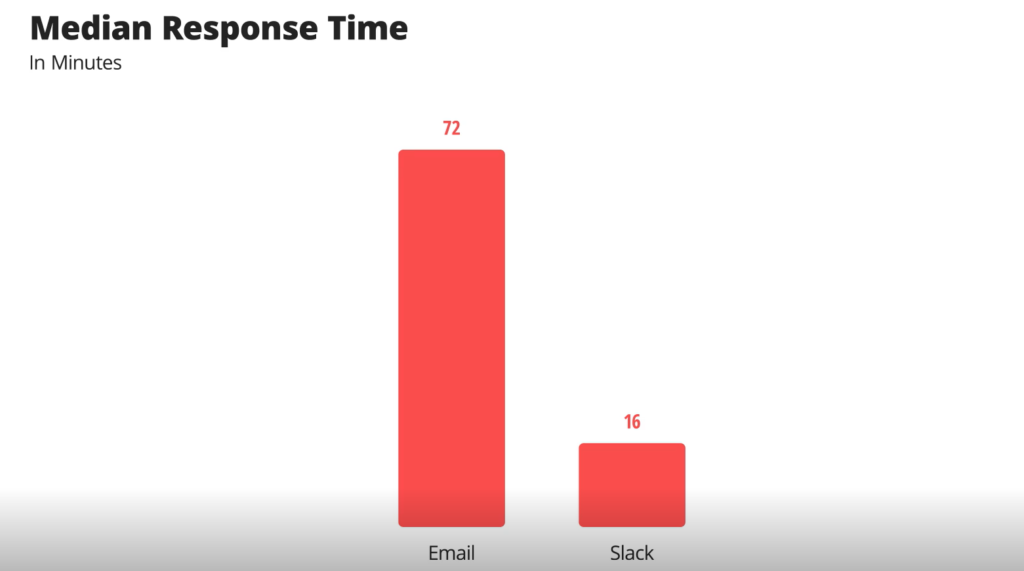
The primary behavior check messages remains the same. Second, first movers don’t necessarily win once larger companies notice how much value slack created. They incorporated an equivalent into their ecosystems for these firms existing customers. Entering the hook is arguably simpler than slack. Microsoft Teams a similar chat tool is part of the Office 365 package. In one week, teams gained 12 million daily active users, a milestone that took Slack five years to reach the lesson. If you own your customers habit, stay vigilant and act quickly. If you’re out to capture it. Look for ways to prevent incumbents from taking habit share.

